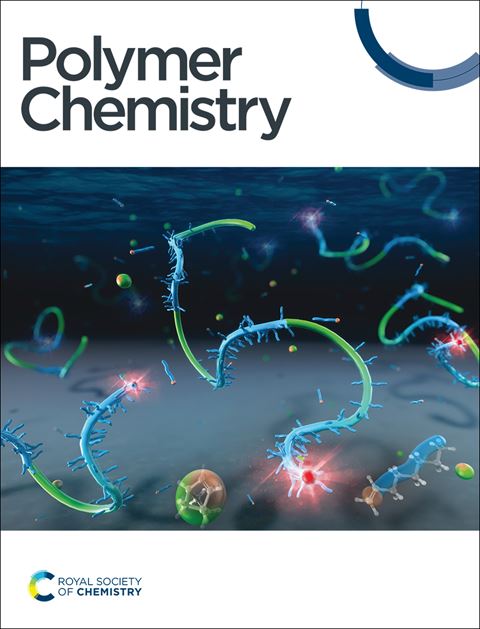Preparation of high-performance one-component polysulfide adhesives and modification by silane side chains†
IF 3.9
2区 化学
Q2 POLYMER SCIENCE
引用次数: 0
Abstract
One-component polysulfide adhesive preparation by diisocyanate-terminated prepolymers and 1,4-butanedithiol (BSO) can provide convenient moisture curing and excellent mechanical properties, but the formation of polysulfide-urea (–NHCOS–) groups causes some reduction in solvent resistance limiting their further application in aircraft fuel tank sealing. Introducing silane side chains into polysulfide adhesive systems is a viable approach to improving the solvent resistance. In this work, a series of novel silane side chain-modified one-component polysulfide adhesives were synthesized by using chain extenders in different proportions of BSO and (3-(2-aminoethyl)aminopropyl)trimethoxysilane (AEAPTMS). The results showed that a moderate amount of silane side chains and restricting the formation of Si–O–Si crosslinked networks can effectively enhance the elongation, interfacial interaction and solvent resistance. The optimal overall performance was obtained when the mass ratio of BSO and AEAPTMS was 7 : 1 (Si-OCPS3). Conversely, the oil and water absorption content after 21 days of Si-OCPS3 were 2.21 ± 0.06% and 2.81 ± 0.31%, being 20.50% and 43.57% lower than before modification (Si-OCPS0), respectively. Moreover, Si-OCPS3 exhibited higher tensile strength of 17.34 ± 0.66 MPa (oil) and 15.67 ± 0.32 MPa (water) than Si-OCPS0. We believe our paradigm can provide a feasible approach for designing high-performance one-component polysulfide adhesives.

高性能单组分聚硫胶粘剂的制备及硅烷侧链改性
二异氰酸酯端端预聚物与1,4-丁二硫醇(BSO)制备的单组分聚硫粘合剂具有方便的湿固化和优异的力学性能,但聚硫脲(- nhcos -)基团的形成导致其耐溶剂性降低,限制了其在飞机油箱密封中的进一步应用。在聚硫胶体系中引入硅烷侧链是提高其耐溶剂性的可行途径。本文以不同比例的BSO和(3-(2-氨基乙基)氨基丙基)三甲氧基硅烷(AEAPTMS)为扩链剂,合成了一系列新型硅烷侧链改性单组分聚硫胶粘剂。结果表明,适量的硅烷侧链和限制Si-O-Si交联网络的形成可以有效地提高延伸率、界面相互作用和耐溶剂性。当BSO与AEAPTMS (Si-OCPS3)的质量比为7:1时,获得了最佳的综合性能。相反,Si-OCPS3 21 d后的吸油率和吸水率分别为2.21±0.06%和2.81±0.31%,分别比改性前(Si-OCPS0)降低20.50%和43.57%。Si-OCPS3的抗拉强度分别为17.34±0.66 MPa(油)和15.67±0.32 MPa(水)。我们相信我们的范例可以为设计高性能的单组分聚硫胶粘剂提供可行的方法。
本文章由计算机程序翻译,如有差异,请以英文原文为准。
求助全文
约1分钟内获得全文
求助全文
来源期刊

Polymer Chemistry
POLYMER SCIENCE-
CiteScore
8.60
自引率
8.70%
发文量
535
审稿时长
1.7 months
期刊介绍:
Polymer Chemistry welcomes submissions in all areas of polymer science that have a strong focus on macromolecular chemistry. Manuscripts may cover a broad range of fields, yet no direct application focus is required.
 求助内容:
求助内容: 应助结果提醒方式:
应助结果提醒方式:


